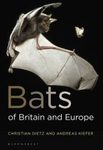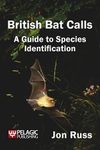![Phylogenetic Relationships of Mormoopid Bats (Chiroptera, Mormoopidae) Based on Morphlogical Data Phylogenetic Relationships of Mormoopid Bats (Chiroptera, Mormoopidae) Based on Morphlogical Data]()
Click to have a closer look
About this book
Related titles
About this book
Mormoopidae is a small family of Neotropical microchiropteran bats that includes two genera (Mormoops and Pteronotus) and ten species, two of which are known only from fossils. Mormoopidae is typically classified as a member of Noctilionoidea, a group that minimally includes two other Neotropical families (Phyllostomidae and Noctilionidae) and may also include Mystacinidae, a taxon endemic to New Zealand and Australia. Phylogenetic relationships of extant mormoopid species and one extinct taxon, Pteronotus pristinus, were investigated in a series of parsimony analyses of 209 morphological characters including features of the skull, dentition, vomeronasal organ complex and brain, trachea and hyoid apparatus, tongue, face, ears, pelage, patagia, postcranial skeleton, postcranial myology, reproductive tract, and digestive tract. Three extant phyllostomid species, two noctilionids, two mystacinids, and one emballonurid species were included as outgroups to test monophyly of Mormoopidae and to provide a context for determining the sister group of the family. Results of parsimony analyses under a variety of different assumption sets indicate that Mormoopidae is monophyletic, and that Pteronotus and Mormoops are monophyletic sister taxa. Within the genus Pteronotus, several clades were repeatedly recovered: (1) P. davyi + P. gymnonotus (= subgenus Pteronotus); (2) P. macleayi + P. quadridens; (3) P. personatus + P. macleayi + P. quadridens (= subgenus Chilonycteris); (4) P. parnellii + P. pristinus + P. personatus + P. macleayi + P. quadridens; and (5) P. parnellii + P. pristinus (= subgenus Phyllodia). These results support monophyly of all subgenera of Pteronotus previously recognized, and additionally indicate that the subgenera Pteronotus and Chilonycteris are sister taxa. Comprehensive diagnoses for each species and clade of Mormoopidae are provided based on character optimizations and ancillary morphometric data from the literature.
Results of our parsimony analyses also have implications for understanding higher-level phylogeny of noctilionoid bats. Monophyly of each of the traditionally recognized families (i.e., Noctilionidae, Mystacinidae, Mormoopidae, and Phyllostomidae) was strongly supported. In congruence with recent analyses of mitochondrial gene-sequence data and DNA hybridization experiments, we found strong support for inclusion of Mystacinidae in Noctilionoidea. Using an emballonurid species to root the tree, we found the following interfamilial relationships of noctilionoids: (Noctilionidae (Mystacinidae (Phyllostomidae, Mormoopidae))). Lists of morphological synapomorphies of each of these groups are provided based on character optimizations.
Customer Reviews









































